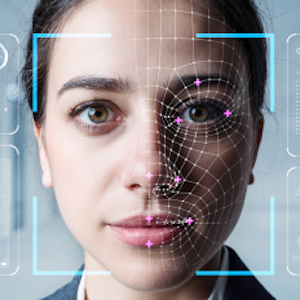By Dr. Ken Broda-Bahm:

A recent issue of American Lawyer included the provocatively titled article, “Why Jury Consultants May Not Be Worth It and Other Tips from Judges.” Reporting on discussions from the Ninth Circuit Judicial Conference, the article included a comment from Judge Marsha J. Pechman of the U.S. Western District of Washington that jury consultants are “reading people,” and that is a skill that lawyers should already have: “I actually think that being able to read people should be…in your wheelhouse already.” In Pechman’s view, what the consultant — or more preferably the lawyer — is doing is watching closely in order to see what the potential juror is really like. This reflects a durable but dated view of what consultants actually do. We are analysts, not mind readers. Ultimately, if a consultant or a lawyer is selling themselves on the ability to “read” people, they are selling something they don’t have.
Support for the non-universality, the subjectivity, and context-dependence of interpreting non-verbal communication is easy to find in the social science research. As much as some have marketed a focus on “micro-expressions,” or “neurolinguistic programming” and related perspectives as ways to turn facial and body expressions into a para-language that can be decoded, the evidence for reliability is scant, and even trained “lie detection” experts have accuracy levels that tend to hover near coin-flip levels. In a recent twist on this literature, a study (Cabitza, et al., 2022) looks at the ability of artificial intelligence to engage in Facial Emotional Recognition. While some envision a near future where our electronic devices will regularly scan our faces so that our car will know if we’re angry, and the website we’re on will see when we’re confused, the problem is that it doesn’t work. The authors of the study, entitled “The Unbearable (Technical) Unreliability of Automated Facial Emotion Recognition,” note that the problem isn’t the abilities of machine learning, but the underlying data they’re trying to learn from — a lack of “ground truth reliability.” In short, in datasets involving still photos and silent video there simply are not enough reliable and valid connections between non-verbal communication and underlying mental states in order to perform the task. That’s a reminder of why claiming to “read” a jury is over-claiming. But that doesn’t mean, by any stretch, that that jury consultants aren’t doing anything useful.
So, if Consultants Aren’t “Reading” People, What Are They Doing?
Recommending Better Questions
In the same American Lawyer article covering the Ninth Circuit conference, the judges correctly note that in voir dire, lawyers often spend too much time talking and too little time listening. I’d add that this is often a product of drawn out “priming” questions that are geared toward telling jurors what they should think rather than finding out what they’re already thinking. Instead of speeches that end in a leading “can you be fair” question, lawyers should be asking clear open-ended questions that create a context for candid expressions of relevant experiences and attitudes. Someone who works on surveys and mock trial questionnaires, someone with training in social science and not just law is going to recommend questions that get better results.
Keeping Track of All the Information
The consultant is the eyes and especially the ears on the potential jury. Yes, that includes paying attention to non-verbal cues too: they may not be reliable mood detectors, but there are still obvious signs (frowning, a shaking head, etc.) that shouldn’t be ignored. But the majority of the attention is on all of the things the jurors are saying in oral voir dire, and also everything that has been learned in advance from the judge’s questioning, from any questionnaire, and from the jury pool’s social media. Having a person focused on keeping track of all that information and keeping it in one place is essential.
Scaling and Recommending
The consultant also brings their own approach in applying a way to weight the various factors and to rate each potential juror. When you have a lot of information — a detailed questionnaire available in advance, for example — that system can be quite sophisticated. When, more commonly, the selection is proceeding on the fly, that system can be a simple five-point scale with 1 being “great” and 5 being “terrible” for you. Systems like that allow the team to have a running sense at all times of who to challenge or rehabilitate for cause, and who to strike.The judge is correct that all of this should be in an attorney’s wheelhouse as well, but especially at the start of a trial, the attorney is focused on a lot. It helps to have not just a second pair of hands, but also to have someone with a perspective and training on social science, public attitudes, and persuasion.
____________________
Other Posts on Nonverbal Communication:
- Don’t Be Too Sure About Face Reading Your Jury
- Masks in Court: Understand the Real Lesson
- The Research/Practice Gap: You Should Continue to Prefer Live Testimony
____________________
Cabitza, F., Campagner, A., & Mattioli, M. (2022). The unbearable (technical) unreliability of automated facial emotion recognition. Big data & society, 9(2), 20539517221129549.
Image credit: Shutterstock, used under license